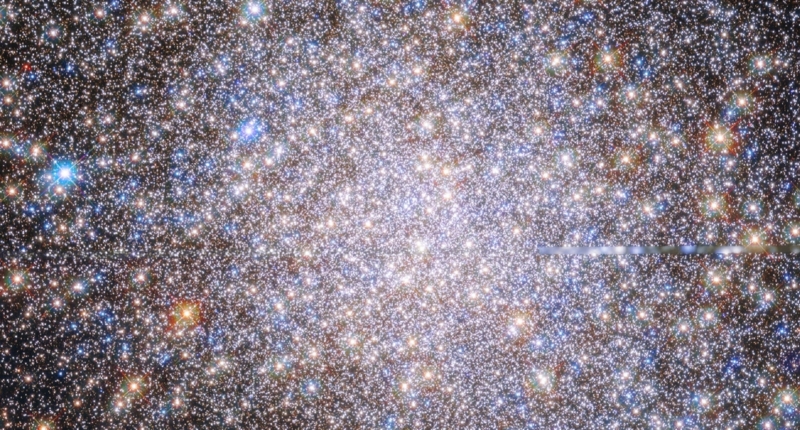NASA’s Hubble Space Telescope has been instrumental in capturing stunning images of celestial objects cataloged by French astronomer Charles Messier over 200 years ago. The Hubble Messier Catalog currently features 84 of the 110 objects, and amateur astronomers can observe them during a Messier Marathon, an event held to observe all 110 objects in a short timeframe. The Caldwell Catalog, a collection of 109 objects visible from the Southern Hemisphere, is also available on the NASA Hubble website. The continued fascination with Messier’s objects shows how science progresses over time, and new telescopes continue to reveal the sheer beauty of the universe.
The Hubble Telescope Continues a 265-Year-Old Stargazing Project
Since 1758, French astronomer Charles Messier has cataloged stars and comets with ground telescopes. Today, NASA’s Hubble Space Telescope continues Messier’s legacy by capturing stunning images of celestial objects like Messier 14, a globular cluster containing over 150,000 stars located 29,000 light-years away from Earth.
Although Hubble has provided awe-inspiring views of the universe since its launch in 1990, Messier 14 holds a special place as one of the many objects cataloged by Messier over 250 years ago. These celestial objects are bright and visible with small ground telescopes, making them popular with amateur astronomers.
Hubble’s recent images of Messier objects, like the globular cluster M14, are especially remarkable because they capture light that doesn’t penetrate Earth’s atmosphere, including ultraviolet light. To give people a chance to see these objects, the Hubble team has been posting images of the vintage catalog online since 2016.
The Hubble team has also created impressive mosaics of celestial objects. The largest one to date was created from 7,398 exposures taken over 411 individual pointings of the telescope. This mosaic of our nearest major galactic neighbor, M31, reveals over 100 million stars and thousands of star clusters embedded in a section of the Andromeda galaxy’s disk. The mosaic, which measures 1.5 billion pixels, was created by a team from the University of Washington, the PHAT team, and astroimager R. Gendler.
Through its breathtaking images and continued documentation of Messier’s objects, the Hubble Telescope has become an essential tool for both professional and amateur stargazers, keeping Messier’s legacy alive for generations to come.
The Hubble Telescope’s Connection to French Astronomer Charles Messier
French astronomer Charles Messier’s fascination with comets led him to create a catalog of celestial objects in 1758. The catalog helped him distinguish between comet sightings and other streaking balls of ice and dust. The catalog, which includes 110 celestial objects such as globular star clusters, nebulae, and the Andromeda galaxy, was later expanded by other astronomers. The objects were numbered in the order in which Messier discovered them, but he only found 103 of them.
NASA’s Hubble Space Telescope has since become instrumental in capturing stunning images of Messier’s objects, allowing amateur astronomers to compare what they see in their telescopes to what Hubble sees. In 2017, NASA’s Hubble team started posting Hubble images of Messier objects online to engage the amateur astronomy community. The Hubble Messier Catalog currently features 84 of the 110 Messier objects, plotted on an interactive map. The team has no plans to purposefully take new images of Messier objects to add to the catalog. Instead, they wait for scientific proposals that overlap with the targets or comb through the Hubble archive to find suitable scenes that haven’t been published yet.
Hubble’s stunning images, such as the mosaic of the Sombrero galaxy, continue to amaze viewers and scientists alike. The nearly edge-on galaxy’s spiral structure is comprised of thick dust lanes that encircle a brilliant, white, bulbous core thought to be home to a massive black hole. The Hubble team’s commitment to documenting Messier’s objects ensures that his legacy will continue to be celebrated for generations to come.
The Hubble Space Telescope and Amateur Stargazers
The Hubble team shared an image of Messier 14, a globular cluster containing over 150,000 stars located 29,000 light-years away from Earth. The image was released as part of a Messier Marathon, an event where amateur astronomers attempt to observe all 110 objects cataloged by French astronomer Charles Messier. Those who complete the marathon can join the official Messier club and receive a certificate and pin. The Caldwell Catalog, a collection of 109 objects visible from the Southern Hemisphere, is also available on the NASA Hubble website.
The continued fascination with Messier’s objects, cataloged over 200 years ago, demonstrates how science progresses over time. With every new telescope, whether on the ground or in space, astronomers make new discoveries and create art from the sheer beauty of the universe.
Don’t miss interesting posts on Famousbio










